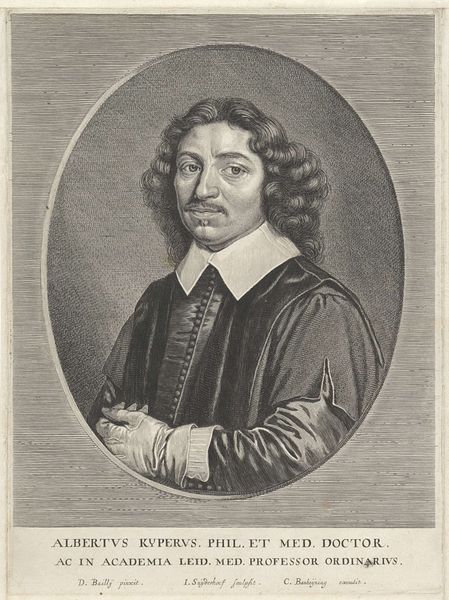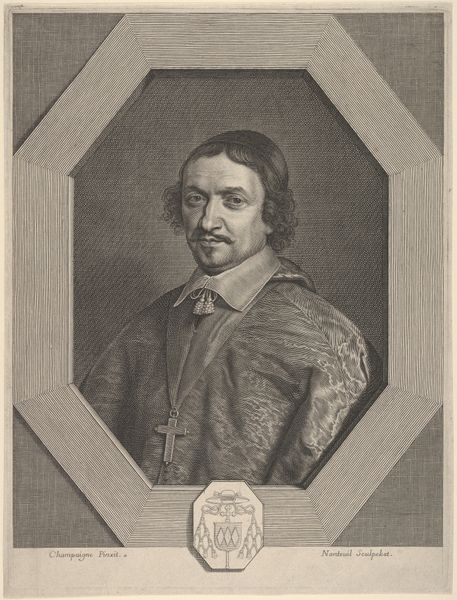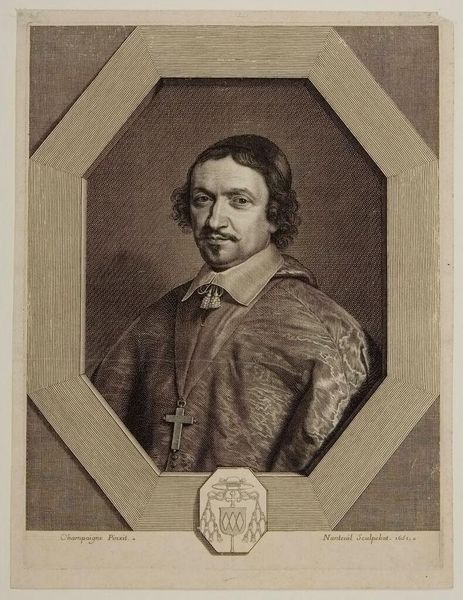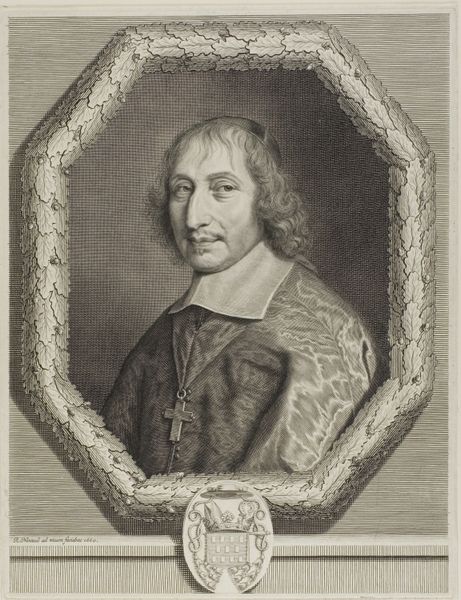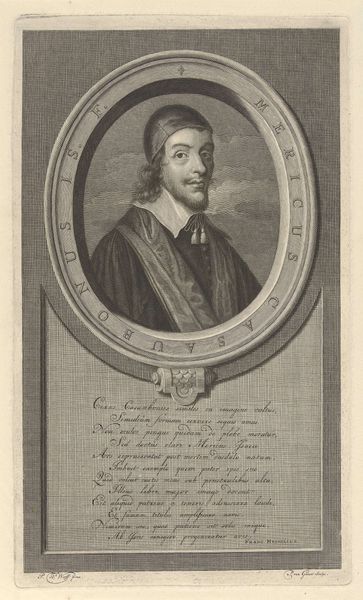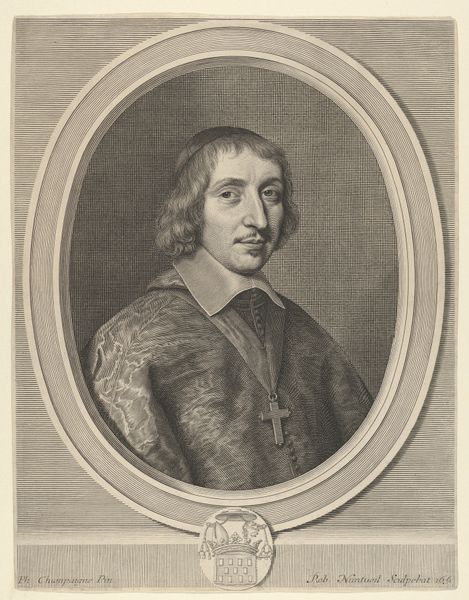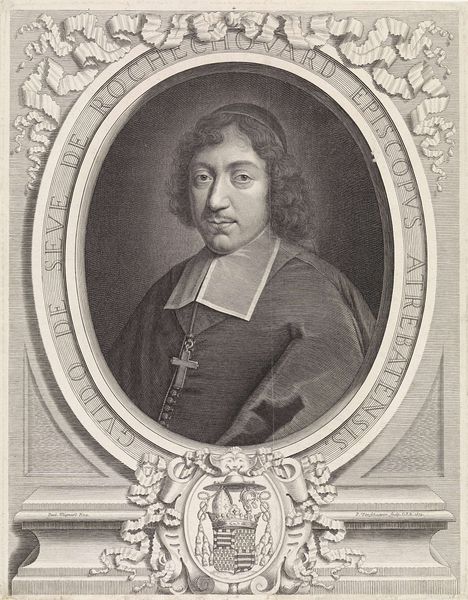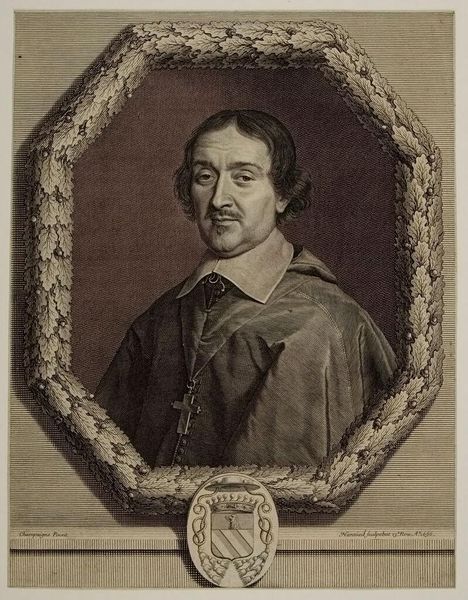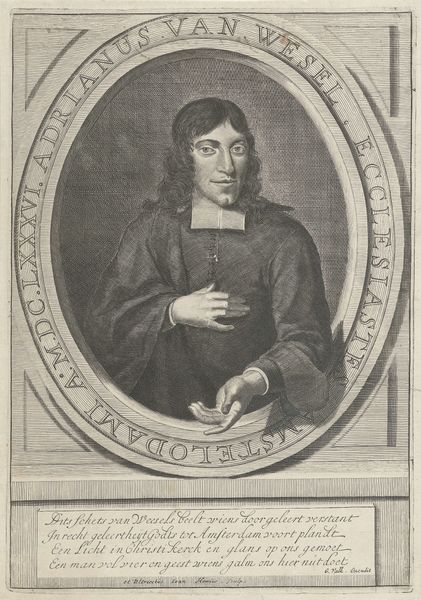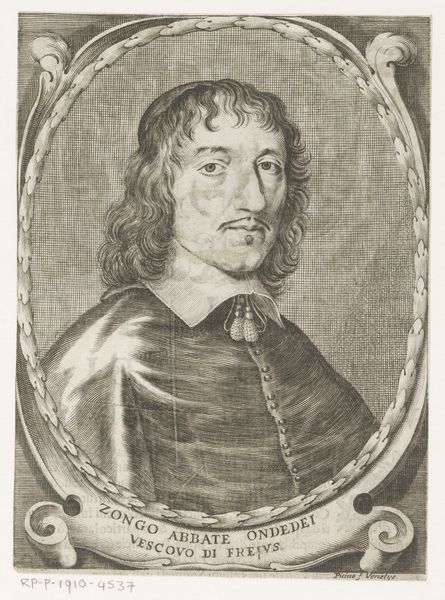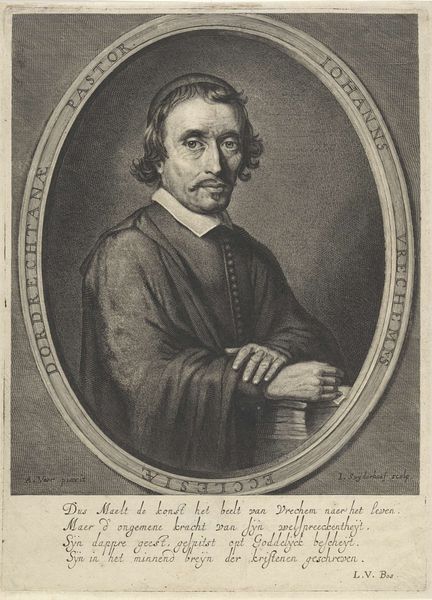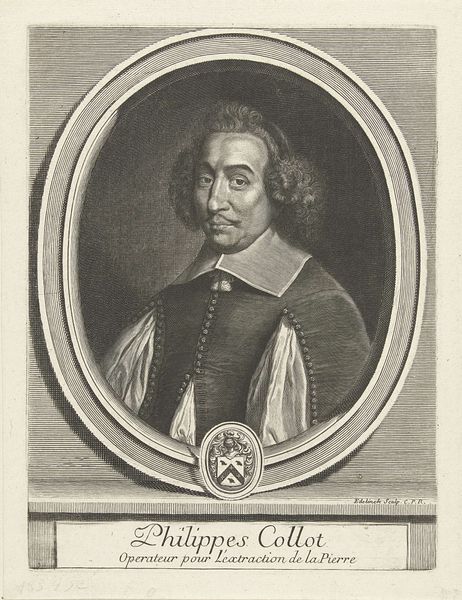
drawing, print, engraving
#
portrait
#
drawing
#
baroque
# print
#
portrait drawing
#
engraving
Dimensions: image: 12 1/8 x 9 3/16 in. (30.8 x 23.4 cm)
Copyright: Public Domain
Editor: Here we have Jean Morin’s portrait print of Pierre Bartier, Bishop of Montauban, created sometime between 1605 and 1650. The precision in the engraved lines is really striking, almost photorealistic, yet the subject seems rather... reserved, I think. How might we unpack the presentation of power at play here? Curator: That "reserved" quality is interesting. It isn’t quite the bombastic, assertive grandeur we might expect from a Baroque-era cleric, is it? Think about the function of portraiture at this time, though. Who would commission a portrait of a bishop, and how would they want him represented? Editor: I imagine the church, perhaps, to project authority. Curator: Precisely! This print, however, has a dual role, both disseminating his image broadly and solidifying his position within the Catholic Church. His garments, though seemingly simple, telegraph immense power, rooted in complex political realities. And notice how the architectural setting further elevates the sitter. Editor: It's fascinating how something seemingly straightforward carries so much coded information. Are there any clues that explain it beyond face value? Curator: Consider the context: the Counter-Reformation, the increasing power of the French monarchy. Every detail here—his gaze, the rendering of his robes, the architectural framing—is calibrated to convey authority and piety at a time of great religious and political upheaval. How do you see the visual style supporting these aims? Editor: The very tight line work feels very proper and maybe suggests stability, almost as a form of visual propaganda. It does lead you to consider the politics of imagery! Curator: Precisely! We can see here how printmaking becomes a crucial tool not just for artmaking, but for consolidating ideological power. It highlights how art participates in broader systems of belief. Editor: Thanks, that perspective helps to uncover meaning. I will rethink my assumptions about Baroque portraiture in the future. Curator: Excellent! Looking at art this way encourages us to interrogate what institutions want us to see and, perhaps more importantly, what they’d prefer we didn't.
Comments
No comments
Be the first to comment and join the conversation on the ultimate creative platform.

